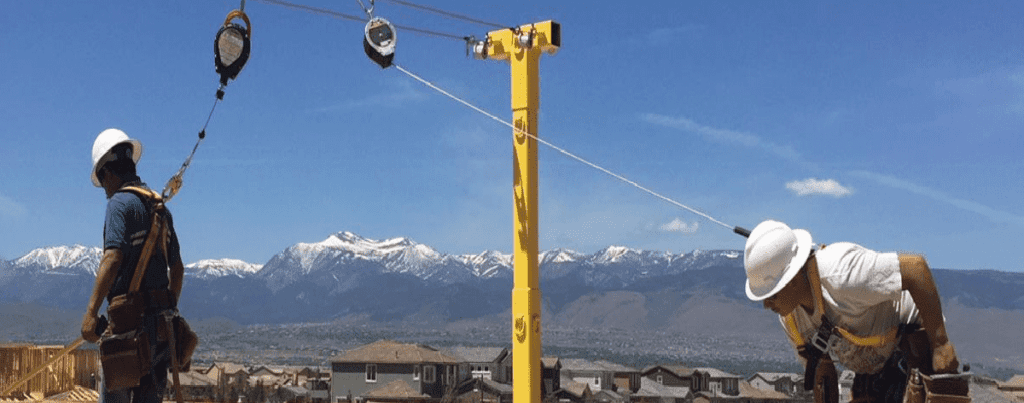
DEDICATED TO GETTING WORKERS HOME SAFELY
Safety starts with Safety Pole

Safety starts with Safety Pole

Overhead fall protection systems have become increasingly popular in the building industry in recent years, and for good reason. Falls are one of the leading causes of workplace injuries and fatalities, and the construction industry has some of the highest rates of these incidents. According to the Occupational Safety and Health Administration (OSHA), falls from heights are the leading cause of death in the construction industry. And in 2024, Fall Protection violations topped OSHA’s list again for most commonly cited by a margin of nearly 2:1 over the second ranking violation. In this article, we will explore the benefits of overhead fall protection systems and why they are essential for workplace safety.
The primary benefit of overhead fall protection systems is the increased safety they provide to workers. These systems are designed to prevent falls from heights and can significantly reduce the risk of injury or death in the workplace. According to OSHA, falls can be prevented by using appropriate fall protection equipment, such as guardrails, safety nets, and personal fall arrest systems.
Overhead fall protection systems, such as horizontal lifelines and anchor points, can be customized to meet the specific needs of each job site. They provide workers with a secure anchorage point that they can attach to when working at heights, allowing them to move around freely while being protected from falls. This increased safety not only benefits workers but also helps to reduce the financial and legal risks that companies face when employees are injured on the job.
Another benefit of overhead fall protection systems is that they help companies comply with safety regulations. OSHA requires employers to provide fall protection to workers who are working at heights of six feet or more. Failure to comply with these regulations can result in fines and legal liabilities. In 2022, OSHA dealt out over $31 million in fines to construction companies due to violations of fall protection policies.
By implementing overhead fall protection systems, companies can ensure that they are meeting safety requirements and reducing the risk of accidents and injuries in the workplace. This can also help to improve the company’s reputation among clients and employees, as a commitment to safety is seen as a sign of responsibility and professionalism.
3.Increased productivity
While safety is the primary concern of overhead fall protection systems, they can also provide additional benefits to companies, such as increased productivity. When workers feel safe and secure in their work environment, they are more likely to be productive and focused on their tasks. By reducing the risk of falls and injuries, companies can create a work environment that is conducive to productivity and success.
4. Cost-effective
Overhead fall protection systems can also be cost-effective for companies in the long run. While the initial investment may be high, the cost of accidents and injuries can be much higher. According to OSHA, the average cost of a fall-related injury in the construction industry is over $100,000. This includes medical expenses, lost wages, and legal fees.
By implementing overhead fall protection systems, companies can reduce the risk of these costs and potentially save money in the long run. Additionally, the implementation of these systems can help to improve the company’s reputation and attract new clients who prioritize safety and responsible business practices.
5. Flexibility
Overhead fall protection systems are flexible and can be customized to meet the specific needs of each job site. These systems can be used in a variety of applications, such as roofing, scaffolding, and bridge construction. They can also be adapted to fit different work environments, including indoor and outdoor spaces.
6. Employee morale
Finally, overhead fall protection systems can have a positive impact on employee morale. When workers feel safe and protected in their work environment, they are more likely to feel valued and respected by their employers. This can lead to increased job satisfaction and loyalty to the company.
Conclusion
Overall, overhead fall protection systems are essential for workplace safety in the building industry. They provide increased safety, help companies comply with safety regulations, increase productivity, and can be cost-effective in the long run. Additionally, these systems are flexible and can be customized to meet the specific needs of each job site.
There are still more benefits to employing an overhead fall protection system. Check out our previous blog posts to find out what they are.
Then contact Safety Pole to make your work sites safer.
The Safety Pole System
Meets Your Fall Protection
Framing Needs




Equip your team with Safety Pole & Accessories
Safety starts with Safety Pole